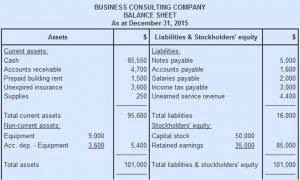
After the company pays the dividend to shareholders, the dividends payable account is reversed and debited for $500,000. The cash and cash equivalent account is also reduced for the same amount through a credit entry of $500,000. If a company issues a 5% stock dividend, it would increase its number of outstanding shares by 5%, or one share for every 20 shares owned.
- These fees make a significant difference in your portfolio’s overall performance.
- While cash dividends have a straightforward effect on the balance sheet, the issuance of stock dividends is slightly more complicated.
- Dividends are paid to the company’s shareholders in proportion to the number of shares owned.
- The company must remove the amount paid from its retained earnings account and credit it to the stockholders’ equity account when the payment is made.
Cash dividend (A most common type of dividend)
For example, Coltene Holdings would be an excellent investment for dentists because they are in the best position to assess which companies in their industry are cutting-edge and well-managed. Growth stocks, however, often collapse during recessions because they tend to be leveraged when these months occur. If a firm decides to save its earnings, they are referred to as retained earnings.
What is your current financial priority?
This way, you can follow current news related to those businesses without searching for them. In addition, You will learn more about the company’s issues and opportunities and find out information about its competitors. To achieve diversification, you should select a class of cyclical dividend-paying assets and compare it to its counterpart.
- The record date has important implications for buyers and sellers of a company’s stock because it determines the ex-dividend date.
- Retaining earnings can lead to growth, but it also means that the company has less cash on hand.
- The amount of money needed to pay a dividend is called the required payout ratio.
- At Finance Strategists, we partner with financial experts to ensure the accuracy of our financial content.
- That said, high dividend yields may be a sign of a stock that’s recently suffered a sharp price decline, so in some cases it may be a warning signal.
Looking to Expand Your Knowledge of Investing?

Miranda is completing her MBA and lives in Idaho, where she enjoys spending time with her son playing board games, travel and the outdoors. Accounting for dividends is a mandatory part of the financial process, and it can get confusing. Here are some tips that will help you better understand the importance of accounting for dividends. In a way, dividends may seem or feel like free money, but in another sense, they’re more like a reward for shareholders for owning a portion of a company.
- While less common, some companies pay dividends by giving assets or inventories to shareholders instead of cash.
- There are many reasons why a company might choose to pay out this money to investors instead of spending it elsewhere.
- When a dividend is declared, it will then be paid on a certain date, known as the payable date.
- Lastly, accounting for stockholders’ dividends allows them to determine whether or not their company is doing well financially.
- Dividends are seen by many investors as a sign that a company is earning a healthy profit and, more to the point, is willing to share it with its investors.
- Dividend yield1 is the annual return an investor receives in the form of dividend payments, expressed as a percentage of the stock’s share price.
This includes the definition of dividend, dividend policies, and how to account for dividends and retained earnings. Low Growth Potential Companies that pay regular dividends are naturally reinvesting less into growing the company, which what type of account is dividends could impact the total return. High Dividend-yield Strategies target companies with high levels of dividend yield. These strategies have the potential to offer a high level of dividend income and the opportunity for capital appreciation.

Do you already work with a financial advisor?

Many countries also offer preferential tax treatment to dividends, treating them as tax-free income. Dividend payouts may also help provide insight into a company’s intrinsic value. Investors tend to https://www.bookstime.com/ forgive the lack of a dividend if the company’s stock price is growing rapidly. Companies can also issue non-recurring special dividends, either individually or in addition to a scheduled dividend.
What Kinds of Assets Pay Dividends?
A dividend is an amount of money paid by a company to its shareholders. We should not think that all dividend yields are the same, just like we would not assume that salt water and spring water are equally desirable simply because they are both liquids. Companies pay out their dividends in different ways depending on their business model or board of directors’ decision.
How often are dividends paid?
The two entries would include a $200,000 debit to retained earnings and a $200,000 credit to the common stock account. The Dividend Value Trap Relying solely on dividend yield as a metric for investing often leads investors to chase high yields at the cost of high risk to their capital. The average dividend yield from S&P 500 companies fluctuates between 3% and 5%.2 It’s prudent to be wary of very high payout ratios that are funded by debt and declining cash flows. Dividend yield1 is the annual return an investor receives in the form of dividend payments, expressed as a percentage of the stock’s share price.
Four types of dividends include cash dividends, stock dividends, property dividends, and liquidating dividends. In addition to this, different companies have different policies for dividends. For instance, some companies believe in the capital appreciation of the share price and do not pay a dividend while using retained earnings to expand their operations. However, dividend payments may restrict the company’s growth as financing problems may arise due to a shortage of funds.



Leave a Comment